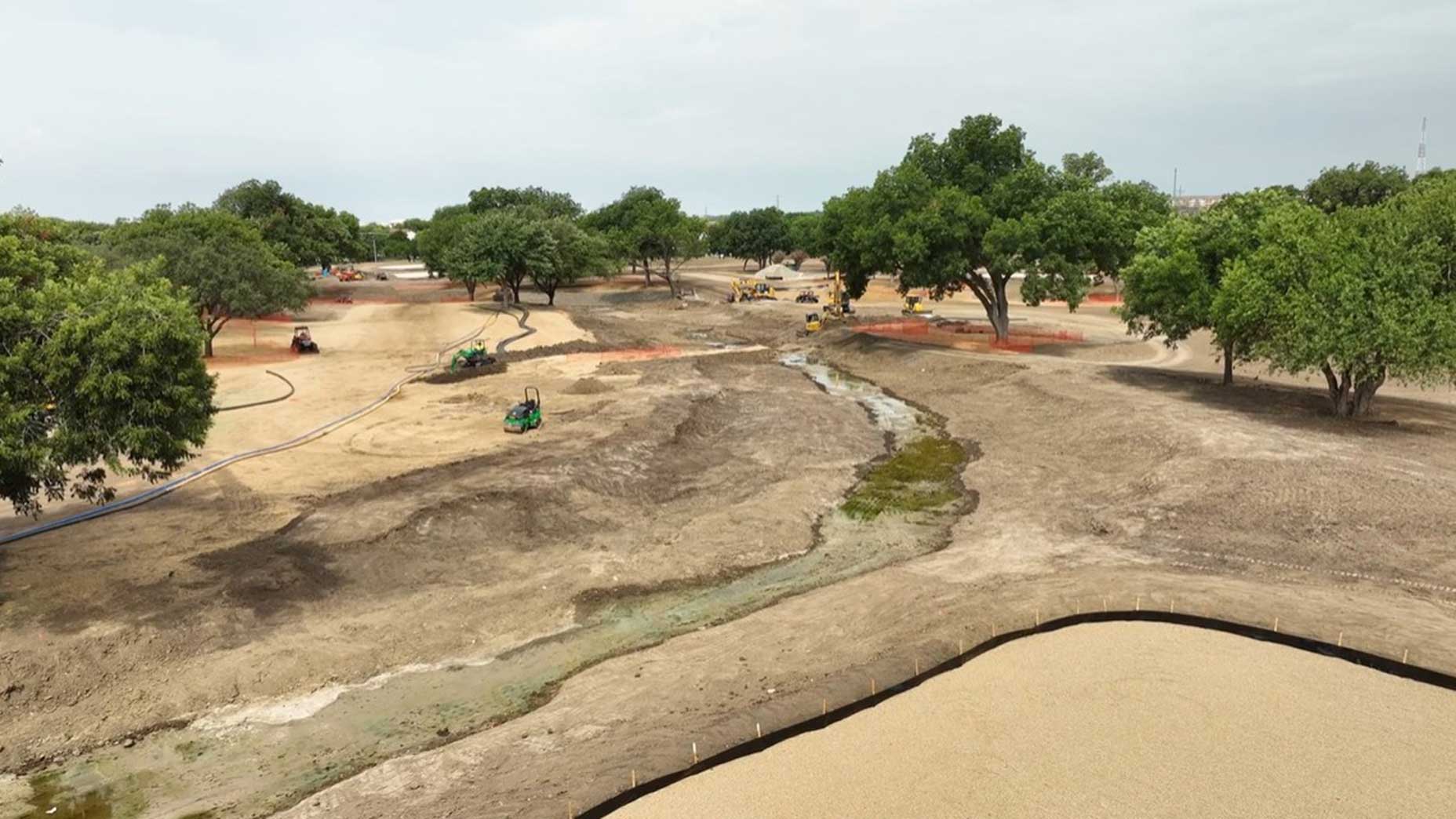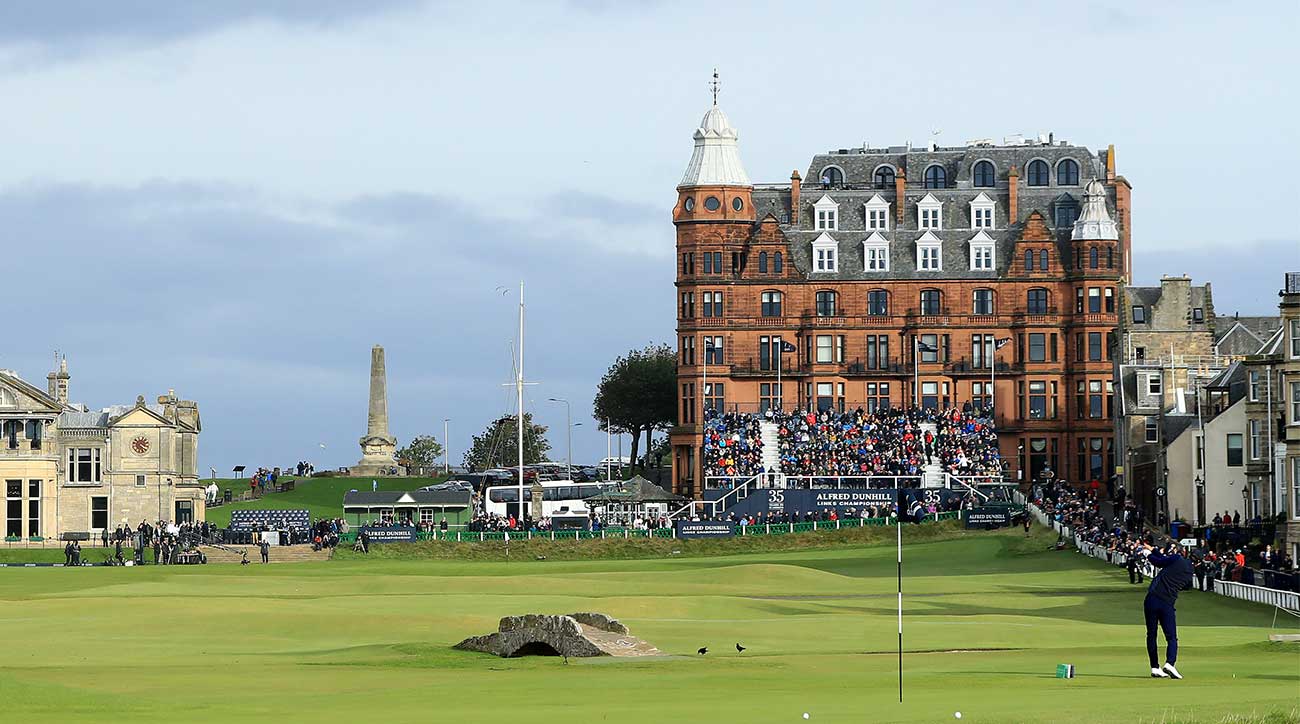Adam Scott calls it a welcome “refresh.” Jordan Spieth describes it as a “really, really good job.”
Gil Hanse won’t argue with them. But the architect has a different label for the work that he and his design partner, Jim Wagner, just completed at Colonial Country Club, in Fort Worth, Texas, in time for this week’s Charles Schwab Challenge.
“We’ve been referring to it as an ‘historical renovation,’” Hanse says. “That’s not meaning to sound pretentious, as in ‘epic’ or ‘grand.’ We mean it in the sense that we used history as our guide.”
At Colonial, there’s a lot of it to go around.
Built in 1936, the course was designed by John Bredemus — with later contributions by the Golden Age giant Perry Maxwell — and bankrolled by a local businessman named Marvin Leonard, who had big ambitions for it from the start. To help realize his dream of hosting marque events, he made his club the first in Texas to feature bentgrass greens, the tournament standard at the time.

In 1941, Colonial landed the U.S. Open, won by Craig Wood, who also captured the ’41 Masters. Five years later, the club welcomed what was then the Colonial National Invitational, and has done so ever since (with the exception of 1949, when flooding closed the course, and 1975, when Colonial hosted the Tournament Players Championship later in the summer), making it the longest-running non-major Tour stop.
The list of Colonial winners is luminous: Sam Snead, Arnold Palmer, Jack Nicklaus, Tom Watson, Ben Crenshaw, though no name shines brighter on these grounds than that of native Texan and longtime Fort Worth resident Ben Hogan, who captured the Colonial a record five times. Not for nothing is the course also known as “Hogan’s Alley.”
Courses are like golfers. They age and change. Turf grows tired. Features fade. In their renovation, Hanse and Wagner sought to strike a balance between past and present, returning the course to its classical roots in way that would hold up to the modern game.
“Harder for the pros, easier for the amateurs” was their motto, Hanse says.
Though the footprint of the course remains largely unaltered, this is not the same Colonial that today’s fans and players have come to know. The most significant changes, Hanse says, are on the par-3s, which, he notes, “were once much more integrated into the water features of the property.” Now they are again. The par-3 8th green, for instance, has been moved, so that it now sits closer to the Trinity River, which winds through the property and poses trouble on multiple holes. The par-3 13th green, for its part, has been pushed uphill, where it is fronted by a pond, while a dry concrete channel along the closing holes, including the par-3 16th, has been reborn as the creek it used to be.
Colonial’s design is usually co-credited to Bredemus and Maxwell. But as they delved into the redo, Hanse says that he and Wagner came to realize that conventional wisdom wasn’t quite right. Bredemus, in fact, did the the initial work. Maxwell was then brought in for modifications in advance of the ’41 U.S. Open, for which he built holes 3 through 5, a famously demanding stretch that has earned the moniker the “Horrible Horseshoe.”

In subsequent decades, as Colonial was reworked by different architects on different occasions, its greens were pushed up. The primary goal was to defend against elite aerial assaults. But as much as anything, the changes made life harder on everyday players without doing much to thwart the pros.
Hanse and Wagner pushed the greens back down to where they were in 1941. They also widened entry points to make room for the ground game while shallowing some bunkers and getting rid of others.
“A six-foot-deep bunker can be very difficult for the average amateur,” Hanse says. “But it doesn’t make much difference to a pro.”
Hanse was at Colonial on Wednesday, watching practice rounds while talking to the press and players. Among the pros he spoke with was Justin Rose, who told Hanse that the renovation had him thinking of changing tactics off the tee.
“He said he was thinking about hitting driver more often, because if he gets in the rough or the trees, he now has an approach that is not as severe,” Hanse said. “Jim and I love it when players are thinking more aggressively, and then at least have an opportunity to get creative and recover if they hit an errant shot.”
The early feedback has been upbeat.
“Generally, It think everything is a nice change,” said Adam Scott, who won at Colonial in 2014. “Some of it is very subtle. I think what’s nice is it feels like Colonial Country Club still and holes like the 8th are certainly improved.”
Echoing that sentiment, 2016 Colonial winner Jordan Spieth hailed the redo as a healthy combination of permanence and change.
“That mix was kind of cool to the nerd in me to be able to still draw on some of the putts I’ve had in the past and some course knowledge,” he said. “But at the same time you can throw that out the window on certain holes.”
A lot of renovations are carried out under flexible deadlines. Hanse and Wagner didn’t have that luxury. Their work began almost as soon as last year’s Colonial ended, with a fixed date to complete the job.
“I’m not going to say I wasn’t nervous about getting it done because I was almost every week,” Hanse said. “We got very lucky with the weather. It was a hot but very dry summer and fall, and we had 365 days to get our work done.”
Hanse won’t be at Colonial for the tournament, but he said he plans to tune in from afar. He’s keen to see how the pros approach the course. Barring heavy rains, he said that Colonial should play “firm and fast.” The entire course has been re-grassed, including the greens, which Hanse said are “so smooth and healthy they are almost monochromatic,” a trait that could add a layer of intrigue.
“There’s a lot of subtlety to them, and you don’t have the same differences in shading that can help reveal the contours,” he said. “I’m curious to see how well they can read the breaks.”
He was hesitant to predict a winning score, but he did provide a forecast.
“Colonial has long been one of the more challenging courses on Tour,” he said. “In that sense, I’m expecting that we’ll see more of the same.”










